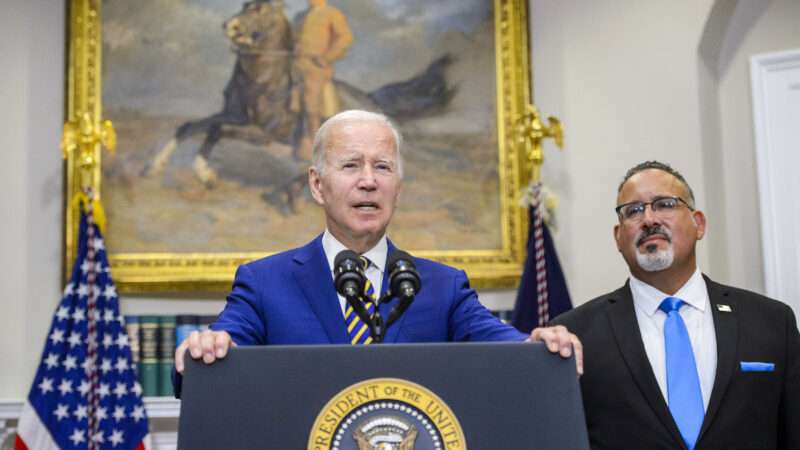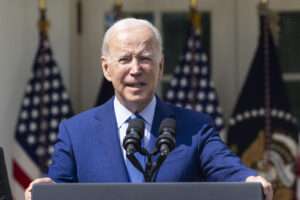Riot cops dance with young people in the streets, waving the flag together and setting off smoke grenades in the national colors. It seems like the ending to a badly written dystopian movie, or perhaps a copy of Kendall Jenner’s infamously tone-deaf Pepsi commercial.
Instead, it was a real scene on Iranian television, after the national team’s victory over Wales last week. Iranian authorities have tried to use the World Cup to stoke nationalist pride and project an image of unity amid an ongoing uprising.
Activists debated whether to claim the national team or shun it. The government has used the latter position to portray its opponents as unpatriotic scolds. To make matters even more charged, Iran’s Group B opponents include two historic enemies, England and America.
The team itself does not seem too thrilled about its political role. Iranian players showed their support for protesters during their game against England, and authorities arrested former national team member Voria Ghafouri soon after, likely as a warning to the current players.
After losing to America on Tuesday night, the team will not advance to the next round of the World Cup. Protesters reportedly took to the streets in response.
Iran has been rocked by an uprising for the past two months. Protests began in response to the death of Mahsa Jina Amini in police custody, then became a general airing of grievances against theocratic rule. Police have fired lethal weapons at protesters and reportedly subjected prisoners to torture and sexual abuse.
More than 300 people have been killed, 14,000 arrested, and six sentenced to death in connection to the unrest, according to the United Nations Human Rights Office.
Along with the repression, Iranian authorities have signaled their openness to reform and have even tried to co-opt the protesters’ demands. After decades of enforcing intrusive social rules—Amini was arrested for “bad hijab”—the Islamic Republic is suddenly beating the drum of national unity between secular and religious citizens.
The World Cup was an opportunity to promote that kind of unity. Leaked audio shows that Iranian officials coordinated with World Cup host country Qatar to manage the image of Iranian crowds. Ever sensitive of its own human rights record, Qatar has tried to keep the soccer tournament as apolitical as possible.
For example, Qatari authorities kicked out a fan for wearing a jersey with Amini’s name on it and prevented spectators from bringing any Iranian flag other than the Islamic Republic’s version.
Under the previous monarchy, the Iranian flag had a lion-and-sun emblem in the middle. After the 1979 revolution, the new Islamist government replaced the emblem with a tulip made of religious calligraphy. Iranians abroad often fly the monarchist flag or a simple red, white, and green tricolor as a symbol of opposition to the Islamic Republic.
Opposition activists debated how to deal with the soccer propaganda. Some had already been calling for a boycott of Iranian sports, as part of a broader campaign to take away the Islamic Republic’s international legitimacy. After all, the national team met with President Ebrahim Raisi before heading off to Qatar.
Retired players Ali Karimi and Ali Daei announced that they would boycott the World Cup. Karimi, who now lives in the United Arab Emirates, has become a kind of spokesman for the protest movement. Iranian agents have reportedly tried to kidnap him in order to shut him up.
Others, like electronic freedom activist Amir Rashidi, British-Iranian comedian Omid Djalili, and former prisoner Jason Rezaian, publicly argued that the team could help draw attention to the Iranian people’s demands.
Iranian players had worn black and refused to celebrate their goals. Star player Sardar Azmoun even wrote on Instagram that his career is worth “sacrificing for one strand of Iranian women’s hair. Shame on you who kill people so easily. Long live Iranian women.”
The team ended up using the World Cup to draw attention to the uprising.
Team captain Ehsan Hajsafi began a press conference “in the name of the Lord of Rainbows,” a reference to the case of Kian Pirfalak, a 9-year-old child shot dead at an Iranian police checkpoint several days before.
In widely televised images, Iranian players took a knee before their first match against England, then refused to sing the national anthem.
Iran ended up losing that match 6–2. Kayhan, a newspaper close to the Iranian government, called it six goals for “England, Israel, the Saudi royal family, and unpatriotic sellouts,” referring to Iran’s geopolitical rivals.
Iran International, a Persian-language news channel with ties to Saudi Arabia, claimed that the Iranian people were celebrating “Iran’s worst defeat in World Cup history.” The Israeli foreign minister reposted Kayhan‘s headline with the caption, “We didn’t go to the World Cup, but we scored six goals. Congratulations to us.”
Iranian authorities arrested Iranian-Kurdish athlete Voria Ghafouri, a former player on the national team, for “incitement.” (Amini was Kurdish, and the heaviest unrest has taken place in Kurdistan.) In private, they threatened the national team’s family members, an anonymous source told CNN.
The players apparently got the message. At the next match against Wales, they sang the national anthem. Iran won 2–0.
Then came the gloating from pro-government media. Kayhan bragged that the Israelis, the Saudis, and the sellouts scored nothing. The heavily armored police who had been watching over public squares began to celebrate. State news agencies filmed them dancing with soccer fans and even celebrated photos of women without hijabs in the crowds.
In other words, the Iranian government painted itself as the side of wholesome fun, opposed by treasonous killjoys.
Ironically, the Islamic Republic had previously tried to keep female soccer fans out of stadiums in order to prevent gender mixing. The restrictions were only lifted in 2019, after soccer fan Sahar “Blue Girl” Khodayari snuck into a game disguised as a man, then died by suicide when she was threatened with jail time.
The latest games coincided with a lull in unrest. Mark Pyruz, a researcher who tracks the situation in Iran, noted that turnout at demonstrations and riots last week was only a fraction of the previous week’s crowds. He speculated that public attention on the World Cup, as well as heavy repression in Kurdish areas, could have put a lid on protests.
Some activists who had called for a boycott downplayed the significance of the celebrations of the victory over Wales.
Voice of America presenter Masih Alinejad tweeted a video of police clapping for the team.
“Only our jailers, interrogators and murderers are celebrating the victory of Islamic Republic’s football team in the World Cup,” she wrote in the caption. “Iranians are in mourning for more than 500 protesters including 50 children were killed by these security forces in the ongoing uprising.”
Others showed a bit of regret about the opposition’s approach to soccer.
“It was us who pushed the team into the arms of the Islamic Republic, which made us more divided than ever,” wrote former BBC producer Panah Farhadbahman after the victory over Wales. “Now that Iran and ‘not the Islamic Republic’ is on the verge of advancing to the World Cup knockout stage for the first time in history, we missed a golden opportunity.”
He speculated that Iranians could have turned their “joy and rebellion into global scenes of protest against the Iranian Republic,” but “now it is the forces of repression who laugh in our faces.”
The match with America has become another venue for political posturing. In an infographic about the Group B rankings, the U.S. Soccer Federation used a version of the Iranian flag without the tulip. The Iranian government lashed out, calling for America to be expelled from the World Cup.
During that game, Azmoun again stayed silent during the anthem, although other players sang along.
After the United States won, videos emerged of Iranian protesters celebrating the national team’s loss in the streets, especially in Kurdish areas. Police attacked the cars of people who were celebrating the loss, according to actor Mohammad Naderi, and reports have emerged that police shot a citizen dead during the demonstrations on Tuesday night.
The tone of pro-boycott activists again turned triumphant.
“The moral fate of the Islamic Republic’s football team—formerly the national team—shows there are only two choices with no middle ground: the people or the government!” wrote Iranian-Finnish activist Kambiz Ghafouri. “Playing moderate means collaborating with the government. People who play at moderation are destined to be finished off.”
The post Iran Attempted To Use the World Cup To Stoke Nationalist Pride appeared first on Reason.com.
from Latest https://ift.tt/cJr3Zvk
via IFTTT











